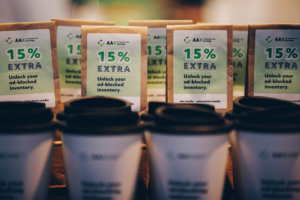It’s pretty hard to find optimistic news about digital content purchasing.
The headlines usually run the spectrum of discouragement, from “Will more people pay for content? It doesn’t look likely” to “The media has a big problem, Reuters Institute says: Who will pay for the news?”
But it’s not an entirely gloomy outlook, especially when you look at two key demographics: ad blocking users and selective ad blocking users.
These users, as it turns out, are enthusiastic purchasers of digital content.
Who are ad blocking users? Who are selective ad blocking users?
Before examining the hard data, let’s define just who comprises these demographics.
Who exactly are ad blocking users? That name refers to the one billion users worldwide who have an ad blocker installed on their device.
The descriptor “selective ad blocking users” refers to the nearly 200 million users who have blocked ads in the past month, but who discover brands or products through ads seen online and have clicked on an online ad in the past month.
One method that selective ad blocking users use is now commonly referred to as ad filtering, which allows users to see unobtrusive, respectful forms of advertisement. These are “Acceptable Ads”—one that fit the criteria set forth by the independent Acceptable Ads Committee.
A third demographic, non- ad blocking users, are those users who don’t have an ad blocker installed on their device.
Demographics primed for digital content
- During the last month, 8.7% of ad blocking users have paid for subscription to an online version of a magazine, compared to only 5.2% of non-ad blocking user.
- And in that same time frame, 10.3% of ad blocking users have paid for a digital news service versus 7.1% of non- ad blocking users.
But it’s the selective ad blocking users—those who consent to see some advertisements through initiatives like Acceptable Ads—who are the highest purchasers of online magazines and news services.
In fact, selective ad blocking users are approximately twice as likely to have made digital content purchases in the last month than non- ad blocking users.
- 12% of selective ad blocking users have a subscription to an online version of a magazine.
- 13.4% of selective ad blocking users pay for a news service
There’s also the matter of digital gifts: 11.5% of selective ad blocking users and 8.1% ad blocking users have made a digital gift purchase in the last month, compared with 5% of non-ad blocking users.
It looks like we’ve found an answer to give to the Reuters Institute: Who will pay for the news? Ad blocking users.
To say that the team at AAX is interested in ad blocking users is an understatement. We’re fascinated.
So we decided to consult the mass trove of data that GlobalWebIndex (GWI) keeps about internet behavior in order to tease out some of the particularities of the group. We took our findings and compiled “10 Things You Didn’t Know About Ad Blocking Users,” a study that peers into everything from digital content purchasing (which is what you just read about) to preferences for pets and real estate.
The study will be published on January 16, 2020.



